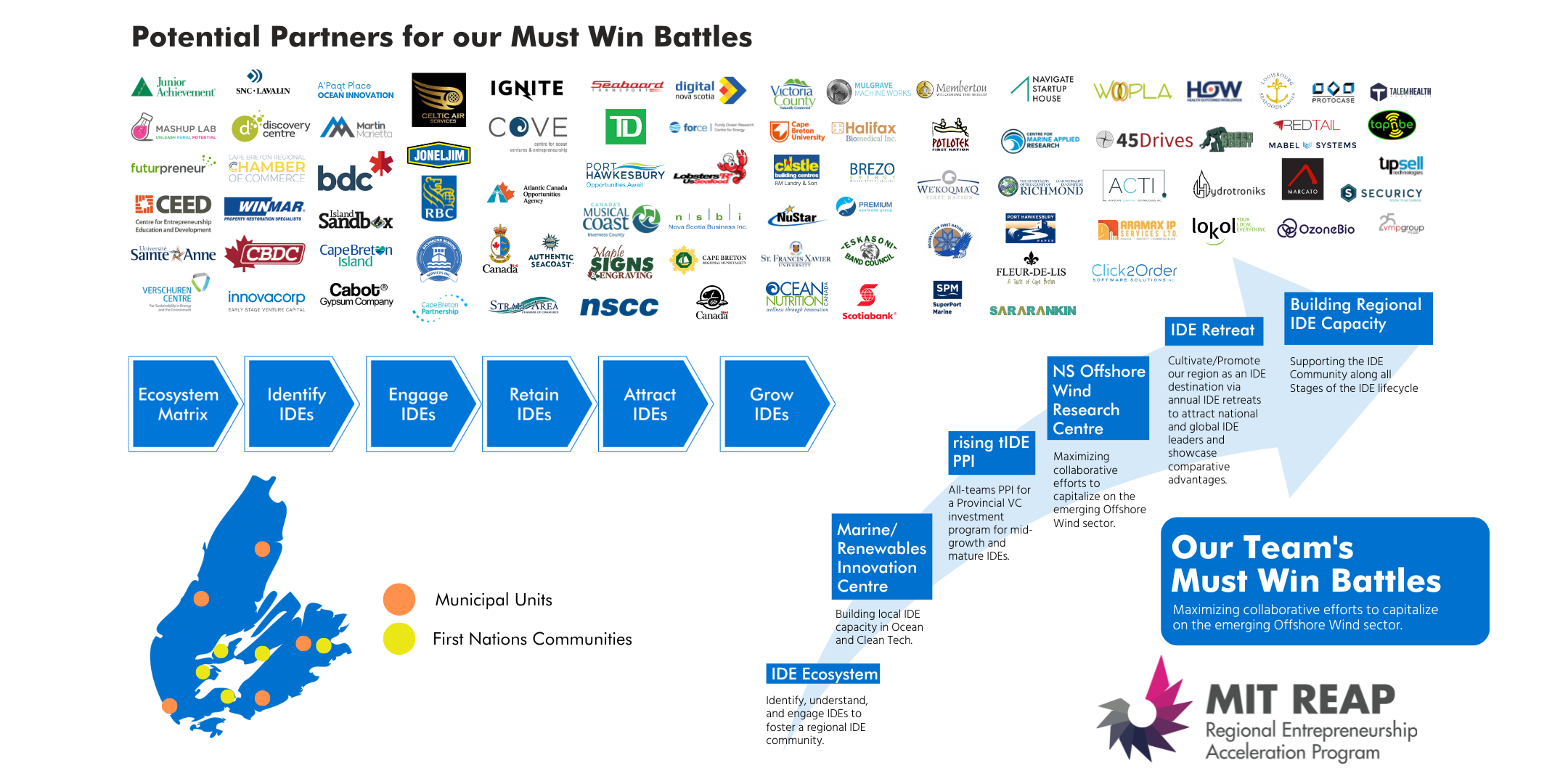< Return to MIT REAP Team Page
MIT REAP Focus Nova Scotia -
Cape Breton Strait Team
The southern part of Cape Breton – Unama’ki is known as the Strait Area. The region is named for its close proximity to the Strait of Canso, which separates mainland Nova Scotia from Cape Breton Island.
The Strait of Canso is a long thin channel, approximately 27 kms long, and 3kms wide. It has been remarked as one of the finest natural ice-free, deep-water ports on the eastern seaboard of North America, and has recently been named as a world-class resource in wind generation.
Here you will find information about Team Cape Breton Strait’s MIT REAP journey, and how a plan was created to break down the barriers to Innovation-Driven Entrepreneurship (IDE) development in the region.
As the team progressed on its journey, it became apparent that there was a much larger IDE ecosystem than originally thought. This led the team to make the decision to broaden their work and perspective to focus Island-wide, and be inclusive of partners across the Canso Causeway, such as the neighbouring Paqtnkek Mi’kmaw Nation and the Municipalities of the Counties of Antigonish and Guysborough.
Meet the Team
Team Cape Breton Strait is composed of entrepreneurs, corporate, academic, municipal, venture capital, and economic development leaders from across the region.
The composition of the core team changed with a few members departing, and a few joining at various stages of the program. The team is committed to inclusivity and ensuring all stakeholders voices are heard and are continuing to pursue partnerships with the Unama’ki community as the map to foster IDEs in the region unfolds.
Current Team
Government
Brenda Chisholm-Beaton
Team Champion and Mayor of the Town of Port Hawkesbury
Tyler Mattheis
Project Manager and President & CEO of the Cape Breton Partnership
Captain Iaian Langley
Atlantic Pilotage Authority
Amanda Mombourquette
Community Innovation Lead at NSCC: Strait Area Campus and Warden of Richmond County
Corporate
Geoff Clarke
Port Hawkesbury Paper LP
Grace MacIntyre
SuperPort Marine Services
Tyler Mattheis
Project Manager and President & CEO of the Cape Breton Partnership
Education
Carla Arsenault
Principal at NSCC: Marconi Campus
Vivek Saxena
Principal at NSCC: Strait Area Campus
Amanda Mombourquette
Community Innovation Lead at NSCC: Strait Area Campus and Warden of Richmond County
Entrepreneur
Chad Munro
Halifax Biomedical
Original Core Team
The composition of the core team changed with a few members departing, and a few joining at various stages of the program. We would like to thank and acknowledge the following original core members who have contributed to this process.
Roderick Googoo, We’koqma’q
Stakeholder Group: We’koqma’q First Nation
Allen Eddy, Port Hawkesbury Paper
Stakeholder Group: Corporate
Blaire Martell, Entrepreneur
Stakeholder Group: Entrepreneur/ Venture Capitalist
Bob Eachern, Entrepreneur
Stakeholder Group: Entrepreneur
Jim Kehoe, Entrepreneur
Stakeholder Group: Entrepreneur/ Venture Capitalist
Edgar Samson, Premium Seafoods
Stakeholder Group: Entrepreneur/ Venture Capitalist




